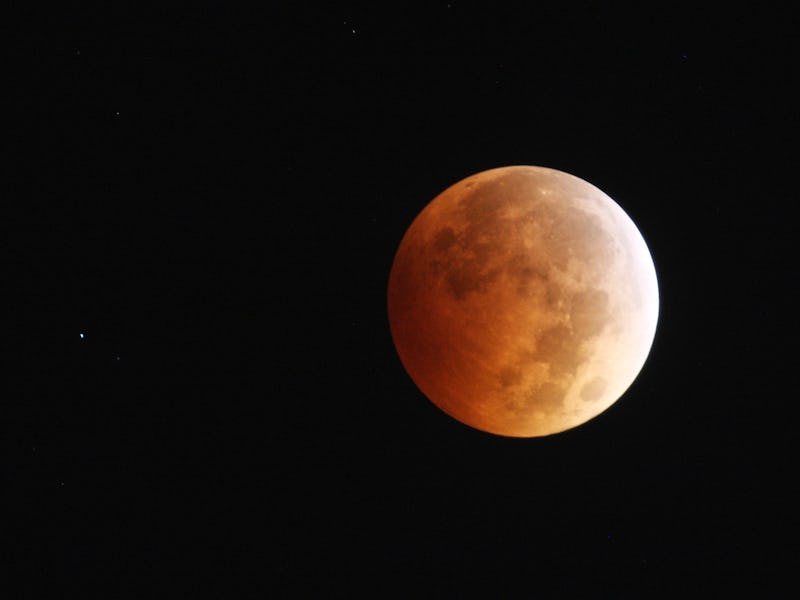Supermoon Eclipse Will Be the First Since 1982
Sunday's 'Supermoon' lunar eclipse will be the first since 1982

Supermoons are cool. They occur when the moon is at its closest point to the Earth in its orbit, making it look a little bit bigger — 14 percent larger this time. Lunar eclipses are cool, too. The moon appears red — some call it a “blood moon” — during a lunar eclipse event because it’s directly behind the Earth, at its darkest point.
It’s pretty rare for the two events to occur simultaneously. Since 1900, a supermoon lunar eclipse has happened just five times. On September 27-28 (depending on where you live), we’ll see the first supermoon lunar eclipse since December 30, 1982.
According to NASA, the supermoon will begin to appear on September 27 at 8:11 p.m. Eastern (that’s September 28 at 12:11 a.m. Coordinated Universal Time), and by 10:11 p.m. we’ll have the total supermoon lunar eclipse. It’ll be visible in North America, South America, Africa, and Europe.
September 27’s supermoon lunar eclipse is a good time to reflect on the glory days of 1982. E.T. was by far the top-grossing film of the year-to-date. The No. 1 song on Billboard’s Hot 100 was Hall & Oates’s “Maneater.” And he didn’t even know it, but LeBron James was exactly two years from being born.
Lunar eclipses aren’t dangerous to look at (like solar eclipses), so going outside at night should be good enough for viewing. You may not have been born yet for the last supermoon lunar eclipse (like LeBron), so you won’t want to miss September 27’s. The next one won’t occur until 2033. By then, we’ll be reminiscing about the Weeknd’s radio dominance and the generational box office success of Maze Runner: The Scorch Trials. What a time to be alive.
Even more Supermoon: Does the Blood Moon Mean the Apocalypse Has Arrived or is Physics Still a Thing?